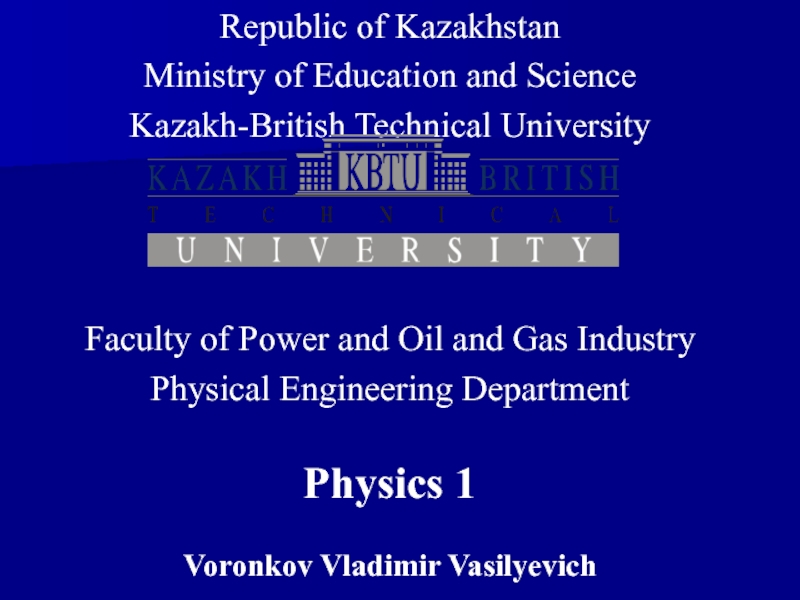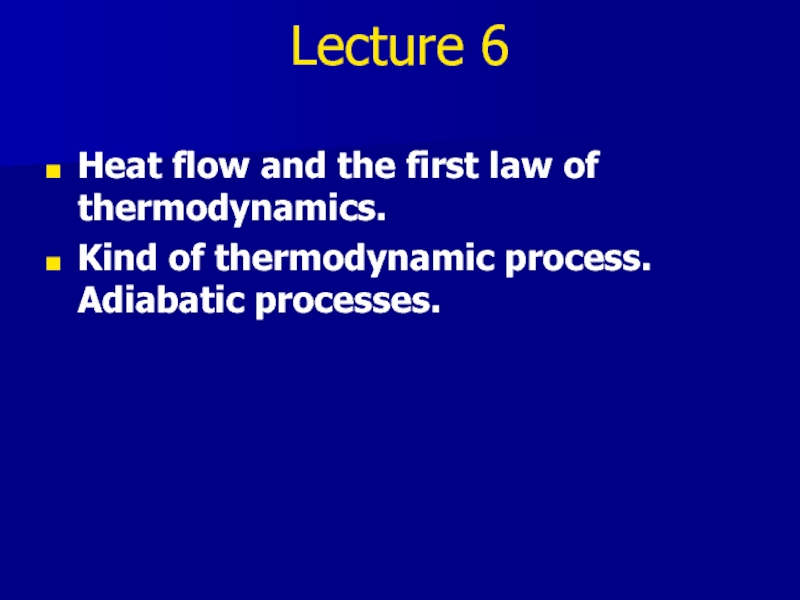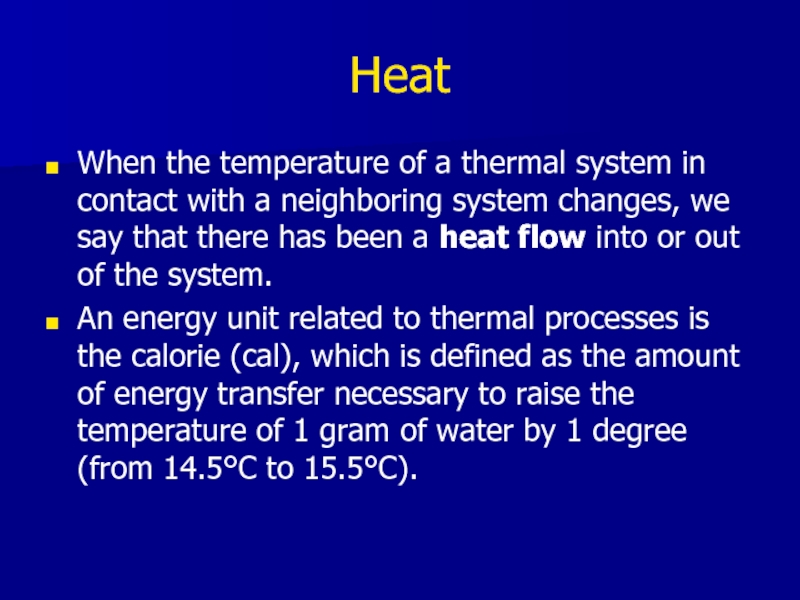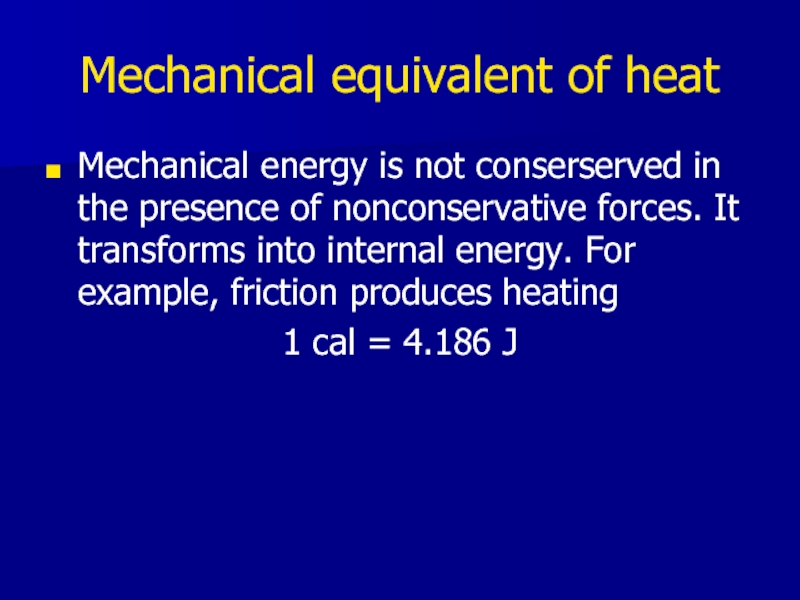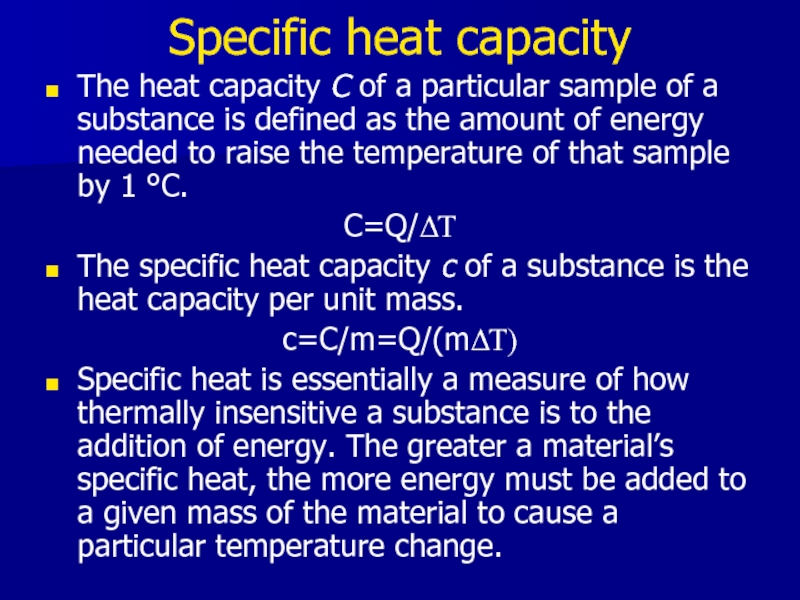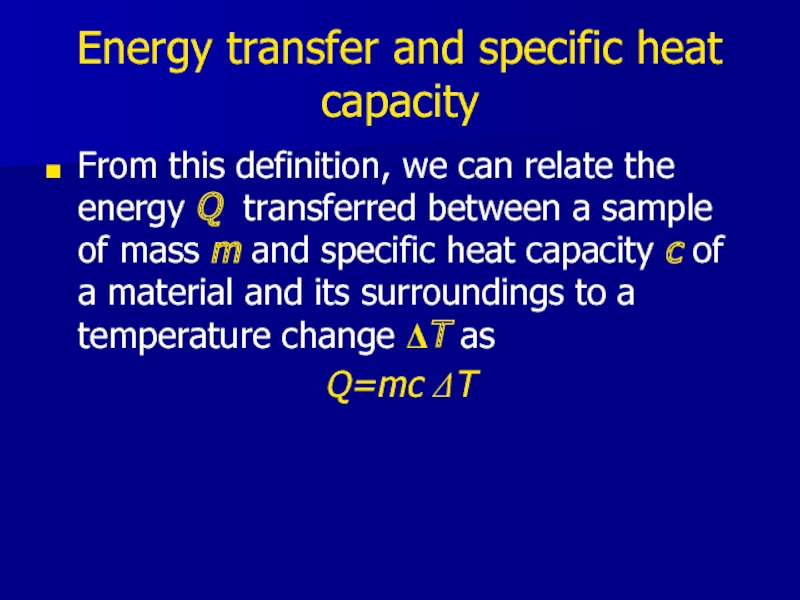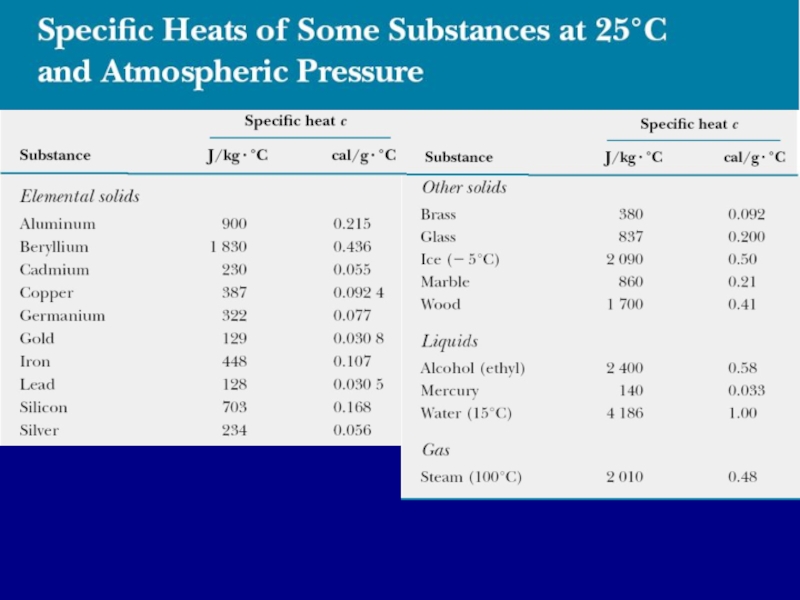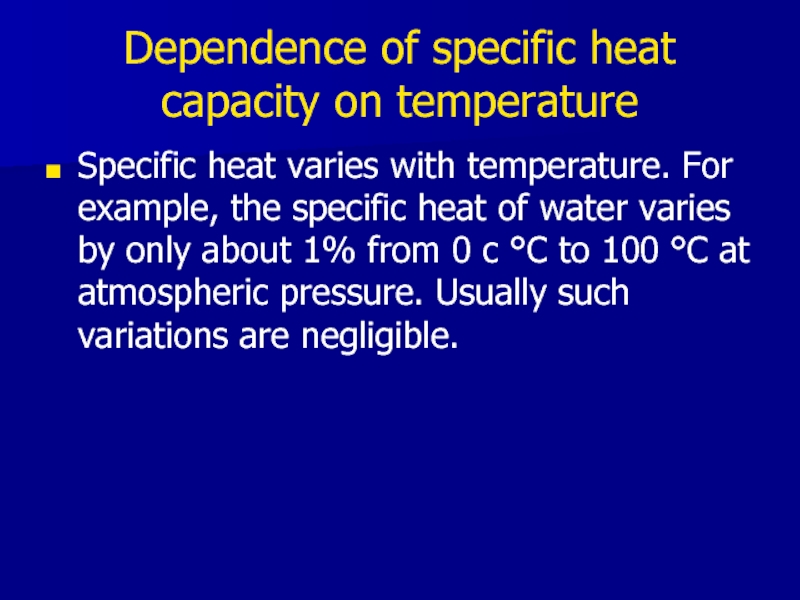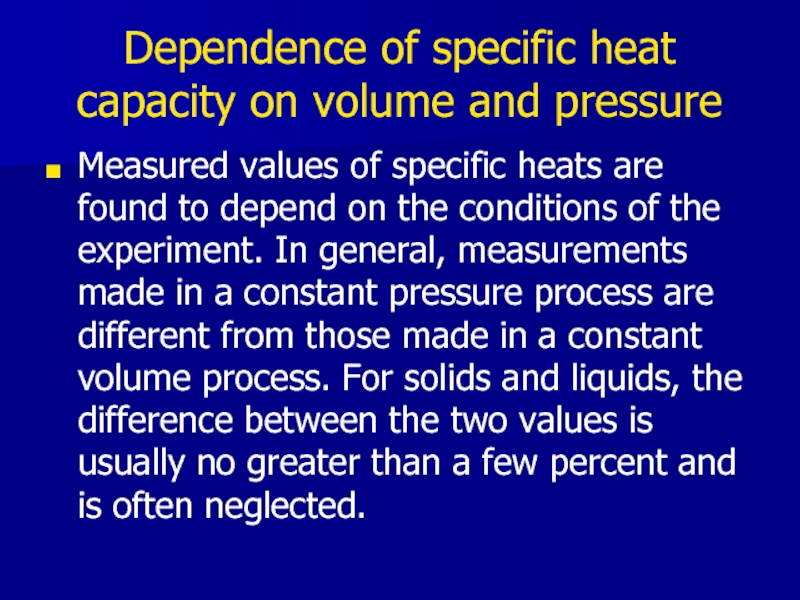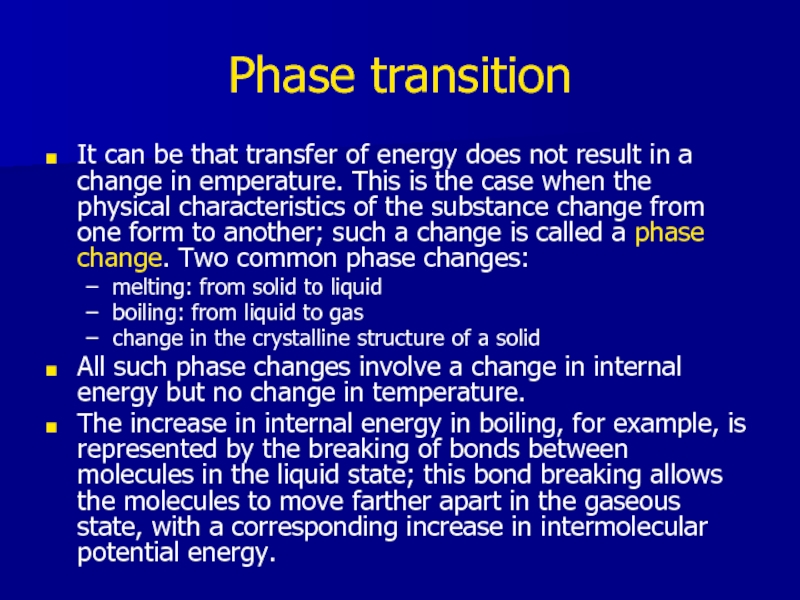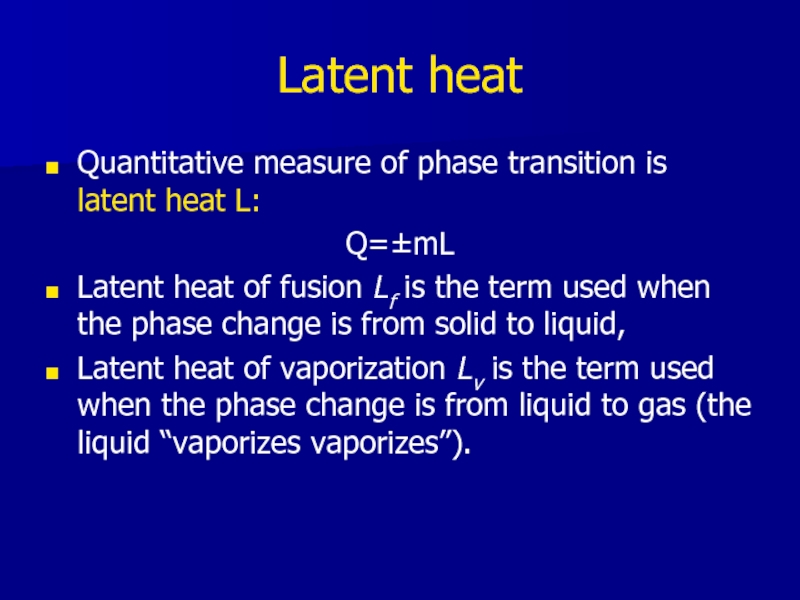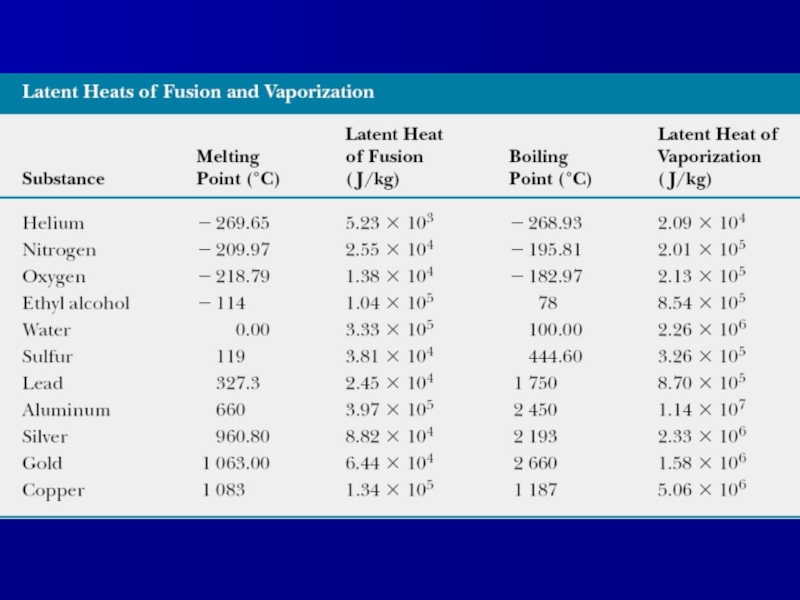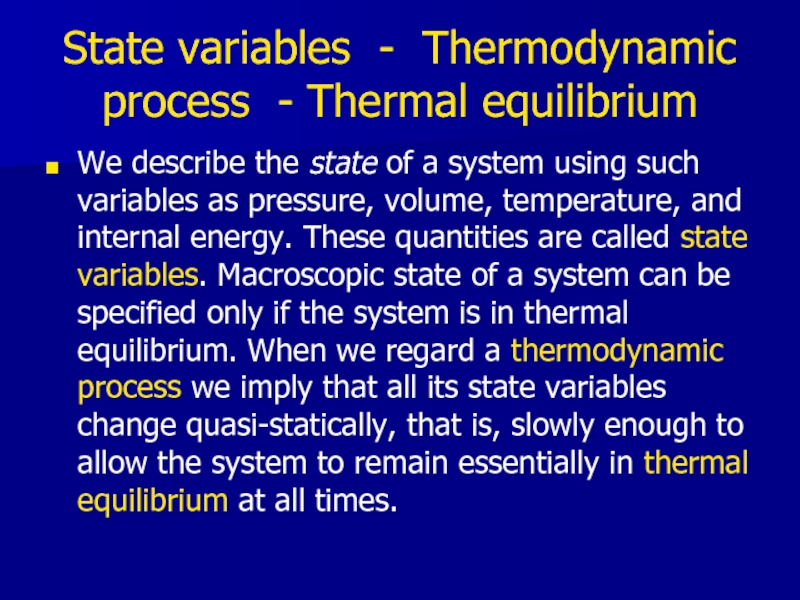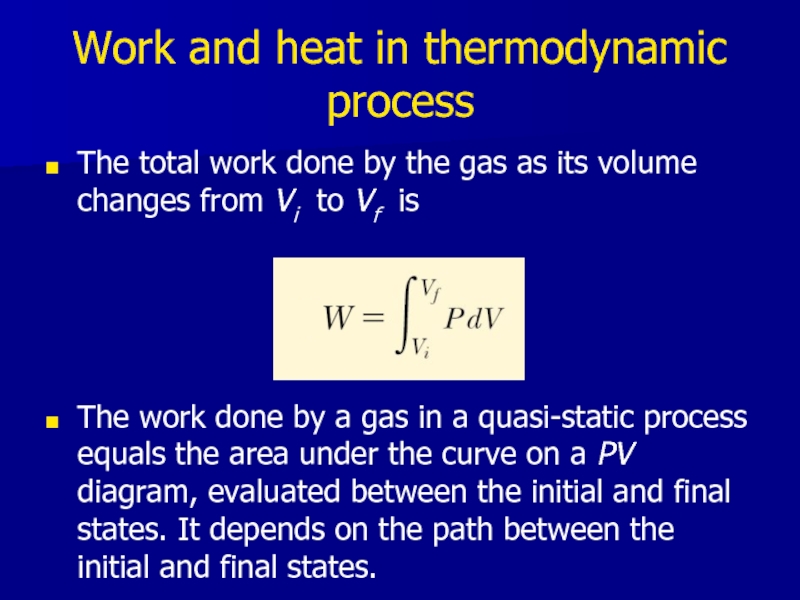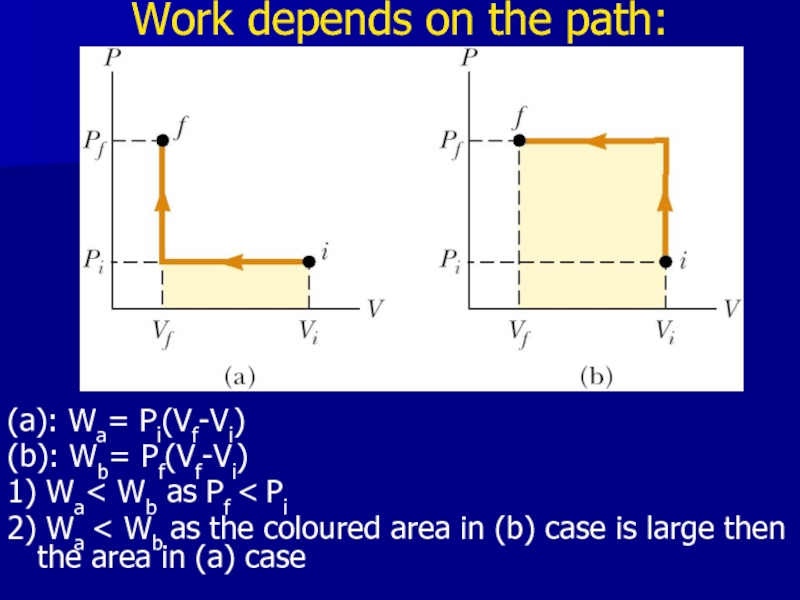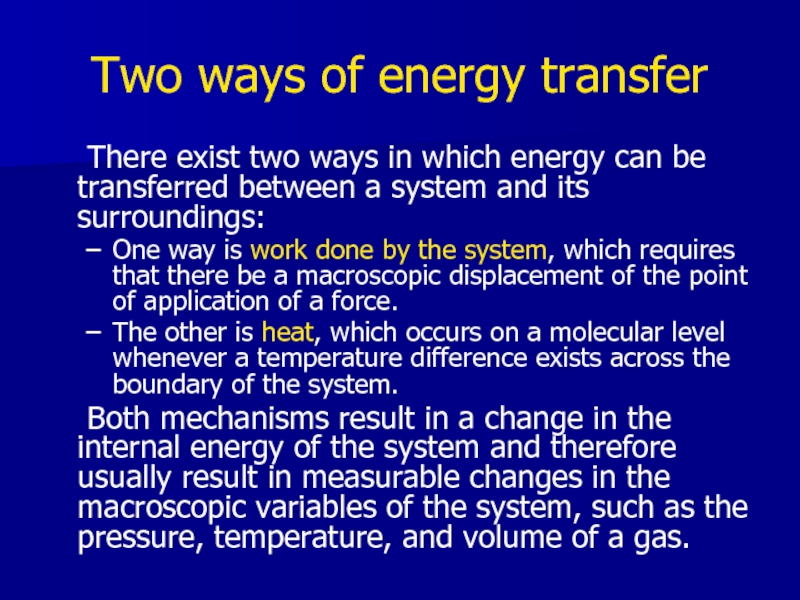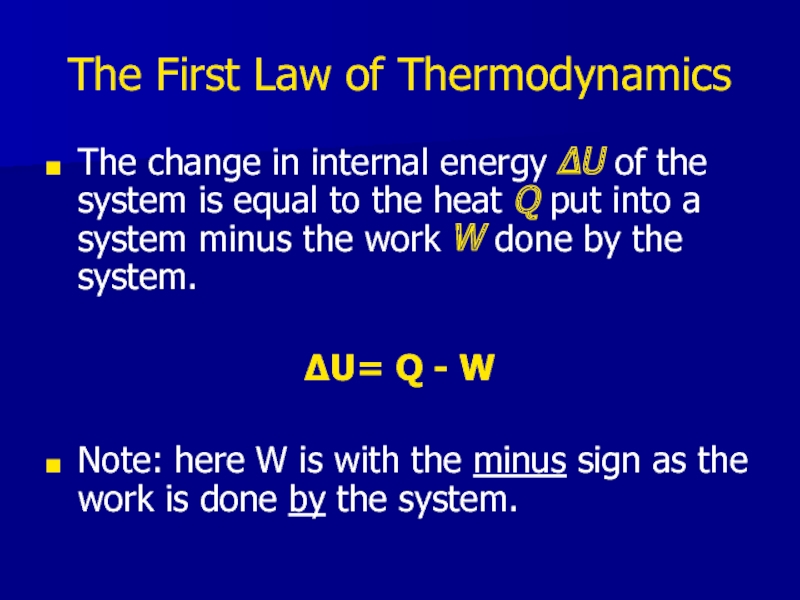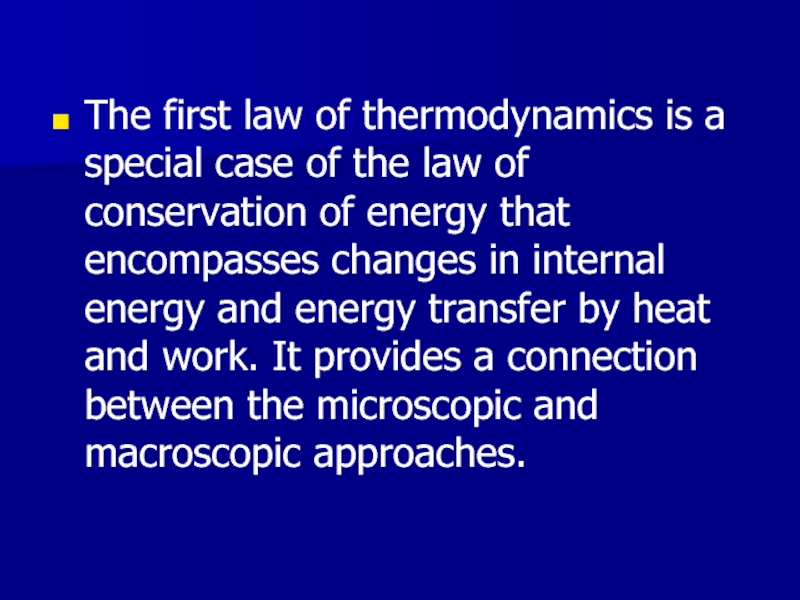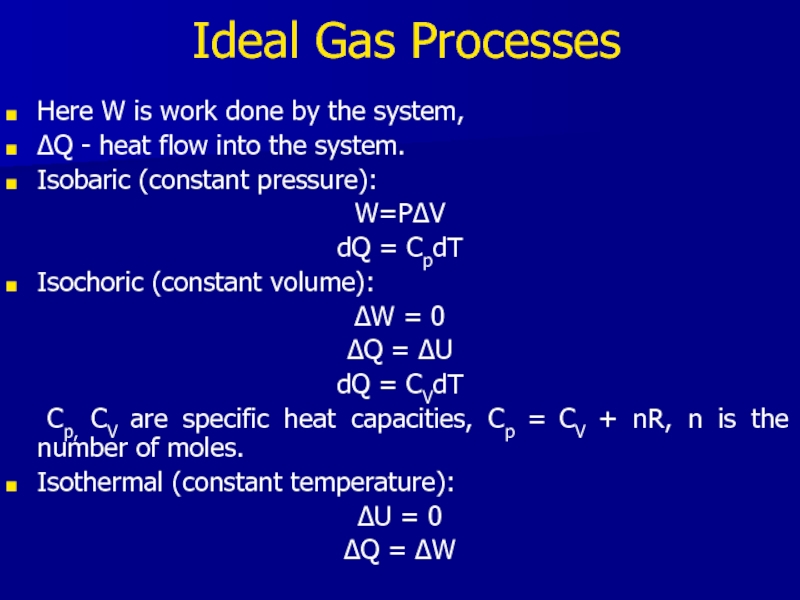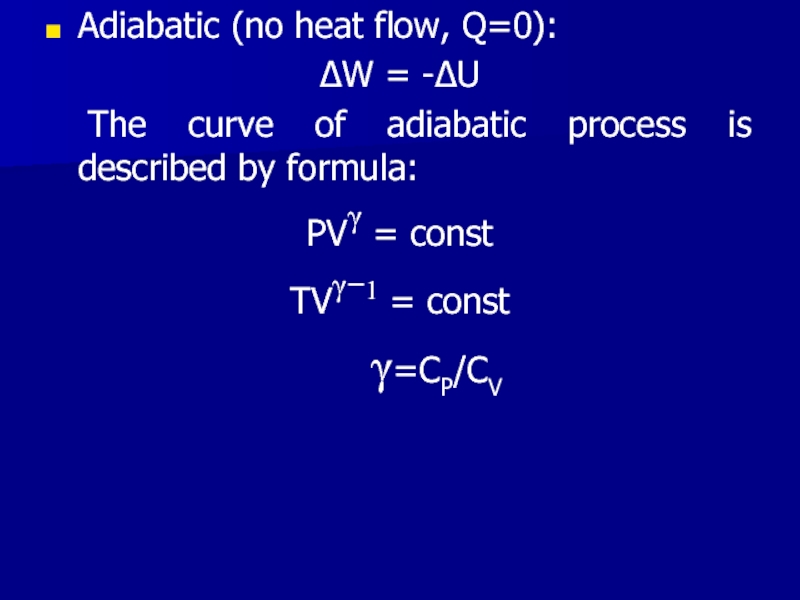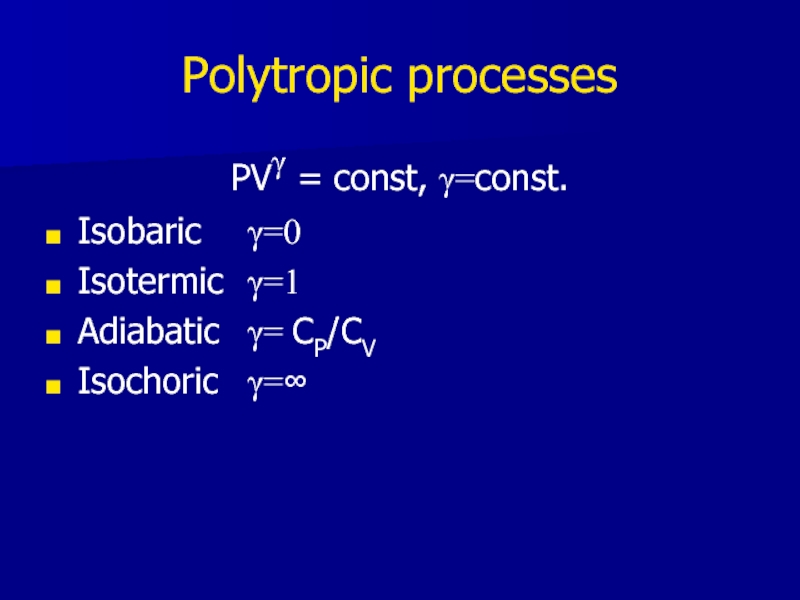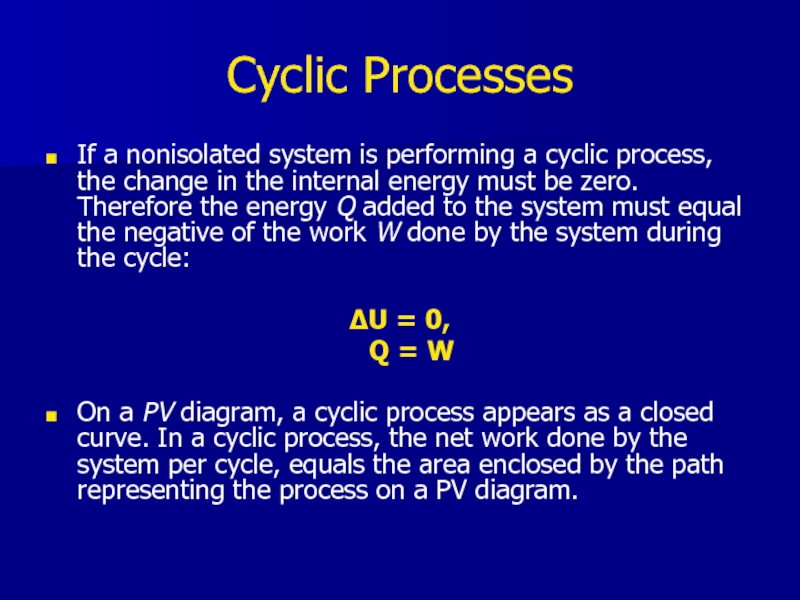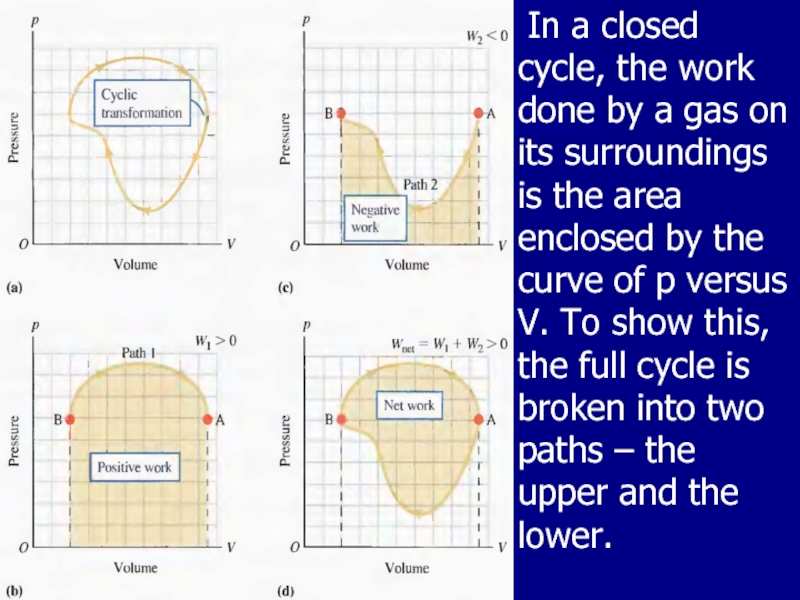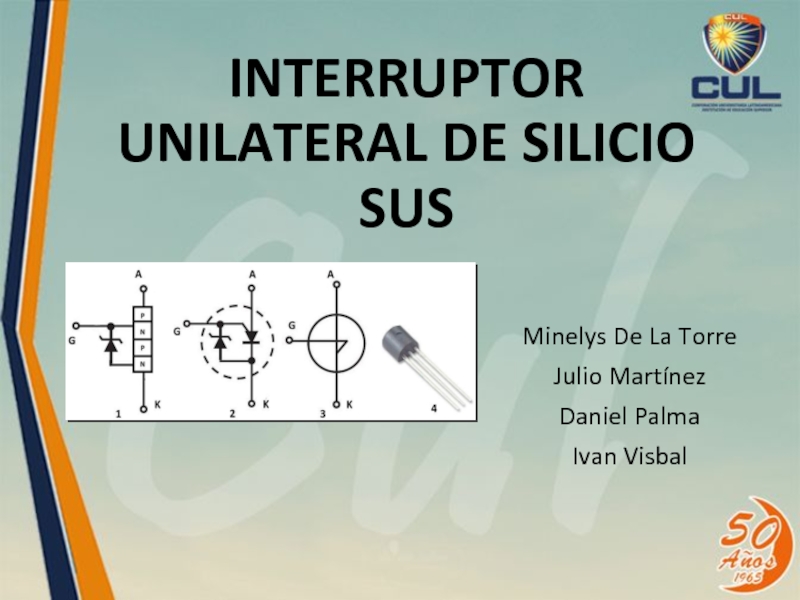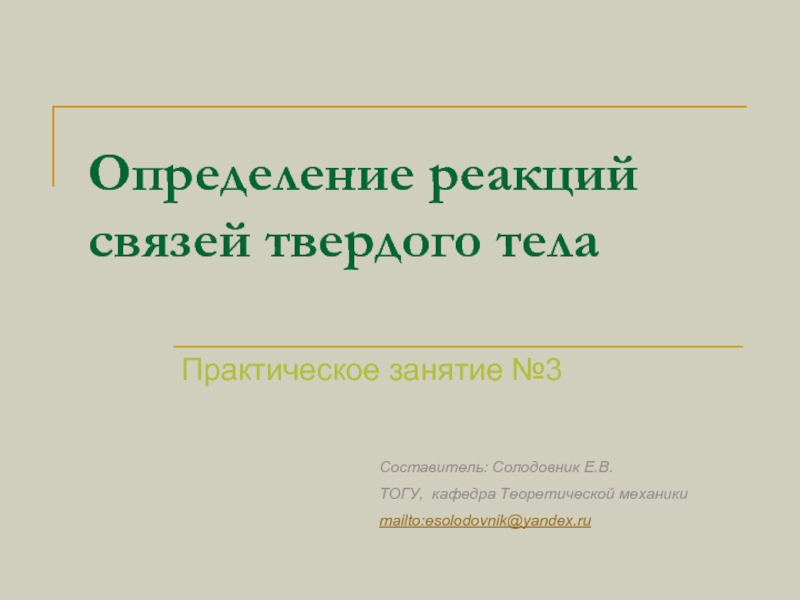Power and Oil and Gas Industry
Physical Engineering Department
Physics 1
Voronkov Vladimir Vasilyevich
- Главная
- Разное
- Дизайн
- Бизнес и предпринимательство
- Аналитика
- Образование
- Развлечения
- Красота и здоровье
- Финансы
- Государство
- Путешествия
- Спорт
- Недвижимость
- Армия
- Графика
- Культурология
- Еда и кулинария
- Лингвистика
- Английский язык
- Астрономия
- Алгебра
- Биология
- География
- Детские презентации
- Информатика
- История
- Литература
- Маркетинг
- Математика
- Медицина
- Менеджмент
- Музыка
- МХК
- Немецкий язык
- ОБЖ
- Обществознание
- Окружающий мир
- Педагогика
- Русский язык
- Технология
- Физика
- Философия
- Химия
- Шаблоны, картинки для презентаций
- Экология
- Экономика
- Юриспруденция
Heat flow and the first law of thermodynamics. Kind of thermodynamic process. Adiabatic processes презентация
Содержание
- 1. Heat flow and the first law of thermodynamics. Kind of thermodynamic process. Adiabatic processes
- 2. Lecture 6 Heat flow and the
- 3. Heat When the temperature of a thermal
- 4. Mechanical equivalent of heat Mechanical energy is
- 5. Specific heat capacity The heat capacity C
- 6. Energy transfer and specific heat capacity From
- 8. Dependence of specific heat capacity on temperature
- 9. Dependence of specific heat capacity on volume
- 10. Phase transition It can be that transfer
- 11. Latent heat Quantitative measure of phase transition
- 13. State variables - Thermodynamic process - Thermal
- 14. Work and heat in thermodynamic process The
- 15. Work depends on the path: (a): Wa=
- 16. Two ways of energy transfer There exist
- 17. The First Law of Thermodynamics The change
- 18. The first law of thermodynamics is a
- 19. Ideal Gas Processes Here W is work
- 20. Adiabatic (no heat flow, Q=0): ΔW =
- 21. Polytropic processes PVγ = const, γ=const. Isobaric γ=0 Isotermic γ=1 Adiabatic γ= CP/CV Isochoric γ=∞
- 22. Cyclic Processes If a nonisolated system is
- 23. In a closed cycle, the work done
Слайд 1Republic of Kazakhstan
Ministry of Education and Science
Kazakh-British Technical University
Faculty of
Слайд 2Lecture 6
Heat flow and the first law of thermodynamics.
Kind of
thermodynamic process. Adiabatic processes.
Слайд 3Heat
When the temperature of a thermal system in contact with a
neighboring system changes, we say that there has been a heat flow into or out of the system.
An energy unit related to thermal processes is the calorie (cal), which is defined as the amount of energy transfer necessary to raise the temperature of 1 gram of water by 1 degree (from 14.5°C to 15.5°C).
An energy unit related to thermal processes is the calorie (cal), which is defined as the amount of energy transfer necessary to raise the temperature of 1 gram of water by 1 degree (from 14.5°C to 15.5°C).
Слайд 4Mechanical equivalent of heat
Mechanical energy is not conserserved in the presence
of nonconservative forces. It transforms into internal energy. For example, friction produces heating
1 cal = 4.186 J
1 cal = 4.186 J
Слайд 5Specific heat capacity
The heat capacity C of a particular sample of
a substance is defined as the amount of energy needed to raise the temperature of that sample by 1 °C.
C=Q/ΔΤ
The specific heat capacity c of a substance is the heat capacity per unit mass.
c=C/m=Q/(mΔΤ)
Specific heat is essentially a measure of how thermally insensitive a substance is to the addition of energy. The greater a material’s specific heat, the more energy must be added to a given mass of the material to cause a particular temperature change.
C=Q/ΔΤ
The specific heat capacity c of a substance is the heat capacity per unit mass.
c=C/m=Q/(mΔΤ)
Specific heat is essentially a measure of how thermally insensitive a substance is to the addition of energy. The greater a material’s specific heat, the more energy must be added to a given mass of the material to cause a particular temperature change.
Слайд 6Energy transfer and specific heat capacity
From this definition, we can relate
the energy Q transferred between a sample of mass m and specific heat capacity c of a material and its surroundings to a temperature change ΔT as
Q=mc ΔT
Q=mc ΔT
Слайд 8Dependence of specific heat capacity on temperature
Specific heat varies with temperature.
For example, the specific heat of water varies by only about 1% from 0 c °C to 100 °C at atmospheric pressure. Usually such variations are negligible.
Слайд 9Dependence of specific heat capacity on volume and pressure
Measured values of
specific heats are found to depend on the conditions of the experiment. In general, measurements made in a constant pressure process are different from those made in a constant volume process. For solids and liquids, the difference between the two values is usually no greater than a few percent and is often neglected.
Слайд 10Phase transition
It can be that transfer of energy does not result
in a change in emperature. This is the case when the physical characteristics of the substance change from one form to another; such a change is called a phase change. Two common phase changes:
melting: from solid to liquid
boiling: from liquid to gas
change in the crystalline structure of a solid
All such phase changes involve a change in internal energy but no change in temperature.
The increase in internal energy in boiling, for example, is represented by the breaking of bonds between molecules in the liquid state; this bond breaking allows the molecules to move farther apart in the gaseous state, with a corresponding increase in intermolecular potential energy.
melting: from solid to liquid
boiling: from liquid to gas
change in the crystalline structure of a solid
All such phase changes involve a change in internal energy but no change in temperature.
The increase in internal energy in boiling, for example, is represented by the breaking of bonds between molecules in the liquid state; this bond breaking allows the molecules to move farther apart in the gaseous state, with a corresponding increase in intermolecular potential energy.
Слайд 11Latent heat
Quantitative measure of phase transition is latent heat L:
Q=±mL
Latent heat
of fusion Lf is the term used when the phase change is from solid to liquid,
Latent heat of vaporization Lv is the term used when the phase change is from liquid to gas (the liquid “vaporizes vaporizes”).
Latent heat of vaporization Lv is the term used when the phase change is from liquid to gas (the liquid “vaporizes vaporizes”).
Слайд 13State variables - Thermodynamic process - Thermal equilibrium
We describe the
state of a system using such variables as pressure, volume, temperature, and internal energy. These quantities are called state variables. Macroscopic state of a system can be specified only if the system is in thermal equilibrium. When we regard a thermodynamic process we imply that all its state variables change quasi-statically, that is, slowly enough to allow the system to remain essentially in thermal equilibrium at all times.
Слайд 14Work and heat in thermodynamic process
The total work done by the
gas as its volume changes from Vi to Vf is
The work done by a gas in a quasi-static process equals the area under the curve on a PV diagram, evaluated between the initial and final states. It depends on the path between the initial and final states.
The work done by a gas in a quasi-static process equals the area under the curve on a PV diagram, evaluated between the initial and final states. It depends on the path between the initial and final states.
Слайд 15Work depends on the path:
(a): Wa= Pi(Vf-Vi)
(b): Wb= Pf(Vf-Vi)
1) Wa< Wb
as Pf < Pi
2) Wa < Wb as the coloured area in (b) case is large then the area in (a) case
2) Wa < Wb as the coloured area in (b) case is large then the area in (a) case
Слайд 16Two ways of energy transfer
There exist two ways in which energy
can be transferred between a system and its surroundings:
One way is work done by the system, which requires that there be a macroscopic displacement of the point of application of a force.
The other is heat, which occurs on a molecular level whenever a temperature difference exists across the boundary of the system.
Both mechanisms result in a change in the internal energy of the system and therefore usually result in measurable changes in the macroscopic variables of the system, such as the pressure, temperature, and volume of a gas.
One way is work done by the system, which requires that there be a macroscopic displacement of the point of application of a force.
The other is heat, which occurs on a molecular level whenever a temperature difference exists across the boundary of the system.
Both mechanisms result in a change in the internal energy of the system and therefore usually result in measurable changes in the macroscopic variables of the system, such as the pressure, temperature, and volume of a gas.
Слайд 17The First Law of Thermodynamics
The change in internal energy ΔU of
the system is equal to the heat Q put into a system minus the work W done by the system.
ΔU= Q - W
Note: here W is with the minus sign as the work is done by the system.
ΔU= Q - W
Note: here W is with the minus sign as the work is done by the system.
Слайд 18The first law of thermodynamics is a special case of the
law of conservation of energy that encompasses changes in internal energy and energy transfer by heat and work. It provides a connection between the microscopic and macroscopic approaches.
Слайд 19Ideal Gas Processes
Here W is work done by the system,
ΔQ
- heat flow into the system.
Isobaric (constant pressure):
W=PΔV
dQ = CpdT
Isochoric (constant volume):
ΔW = 0
ΔQ = ΔU
dQ = CVdT
Cp, CV are specific heat capacities, Cp = CV + nR, n is the number of moles.
Isothermal (constant temperature):
ΔU = 0
ΔQ = ΔW
Isobaric (constant pressure):
W=PΔV
dQ = CpdT
Isochoric (constant volume):
ΔW = 0
ΔQ = ΔU
dQ = CVdT
Cp, CV are specific heat capacities, Cp = CV + nR, n is the number of moles.
Isothermal (constant temperature):
ΔU = 0
ΔQ = ΔW
Слайд 20Adiabatic (no heat flow, Q=0):
ΔW = -ΔU
The curve of adiabatic process
is described by formula:
PVγ = const
TVγ−1 = const
γ=CP/CV
PVγ = const
TVγ−1 = const
γ=CP/CV
Слайд 21Polytropic processes
PVγ = const, γ=const.
Isobaric γ=0
Isotermic γ=1
Adiabatic γ= CP/CV
Isochoric γ=∞
Слайд 22Cyclic Processes
If a nonisolated system is performing a cyclic process, the
change in the internal energy must be zero. Therefore the energy Q added to the system must equal the negative of the work W done by the system during the cycle:
ΔU = 0,
Q = W
On a PV diagram, a cyclic process appears as a closed curve. In a cyclic process, the net work done by the system per cycle, equals the area enclosed by the path representing the process on a PV diagram.
ΔU = 0,
Q = W
On a PV diagram, a cyclic process appears as a closed curve. In a cyclic process, the net work done by the system per cycle, equals the area enclosed by the path representing the process on a PV diagram.
Слайд 23 In a closed cycle, the work done by a gas on
its surroundings is the area enclosed by the curve of p versus V. To show this, the full cycle is broken into two paths – the upper and the lower.
